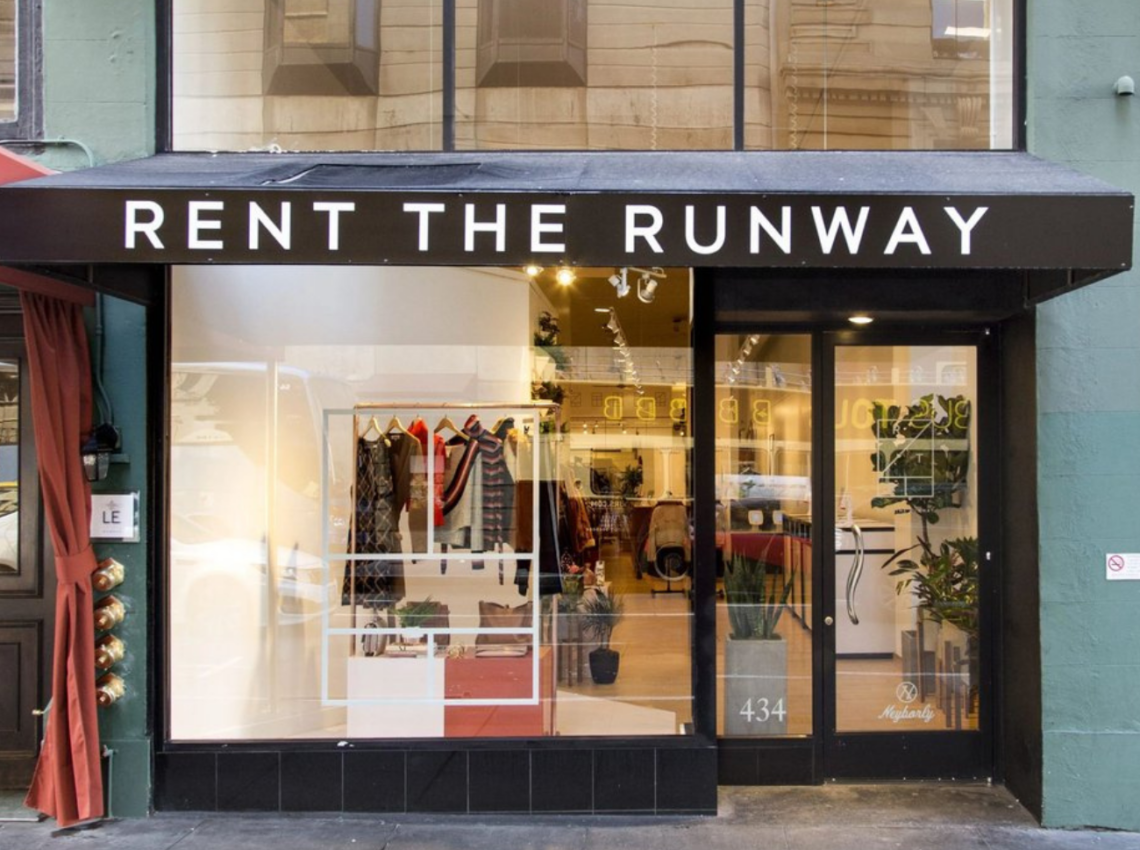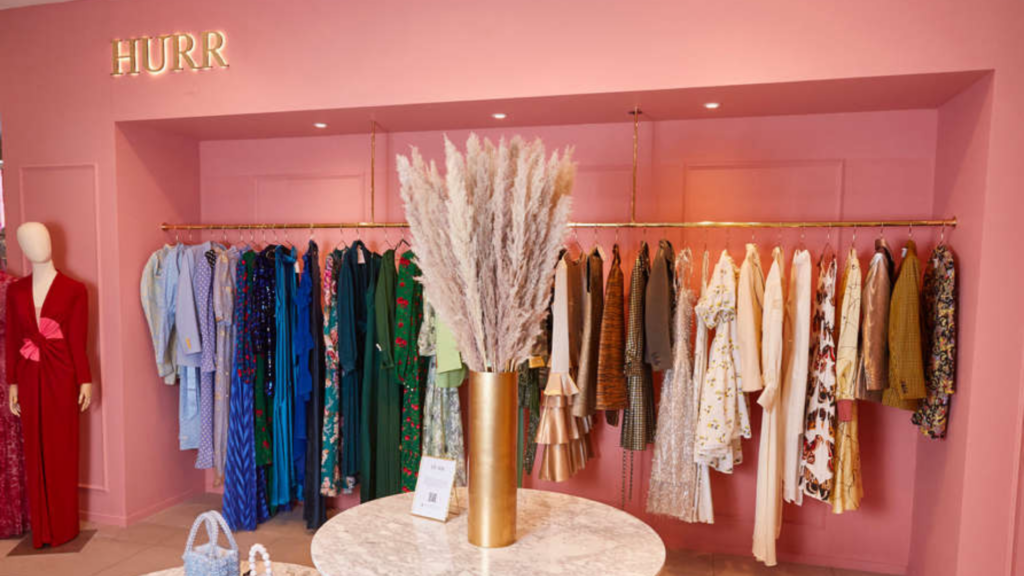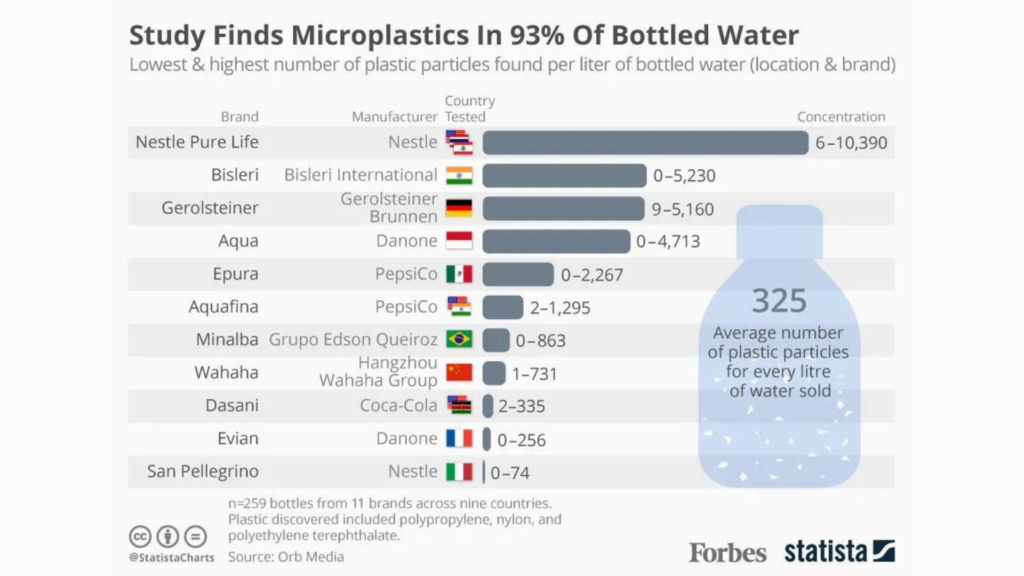Rental fashion: The Future of Sustainable Fashion or Just Greenwashing?

In recent years sustainability has been the buzzword of fashion, particularly with the introduction of rental fashion to the masses.
The concept of renting dresses, jewellery and accessories for an event or special occasion is well established in the celebrity world. Stylists would be loaned dresses by designers for their clients to wear to red carpet events, galas and balls etc. This enables the stars to have access to pieces they would otherwise not be able to afford or have access to, and presents a marketing opportunity for brands to get their pieces in front of a worldwide audience, attached to a much-loved celebrity figure. This idea of loaning clothing presenting a marketing opportunity was further exacerbated by the introduction of “who are you wearing” question by Joan Rivers on the 1994 Golden Globes red carpet. This meant that instead of just fashion editors, stylists, journalists and other fashion professionals who keep an eye on fashion shows knowing which celebrity was wearing which designers, the stars themselves were expected to know which designer they were wearing. As fashion is such a physically and emotionally labour intensive industry, the gifting of pieces was only available to those that had invested years in establishing relationships with brands. So, up until recently this experience was not available to the everyday fashionista.
Fast forward to 2009, and the launch of industry leading Rent The Runway co-founded by Jenn Hyman and Jenny Fleiss. For the first time ever regular people had access to high ticket pieces for a short period of time – a cinderella moment. As is always the case with new entrants to the market, customers and designers were sceptical. Since then however, many companies with slight differentiators have entered the market. However, the vast majority of these rental companies were US based. In 2018 Victoria Prew launched UK based HURR, with the added element of peer to peer renting quickly followed by a concession in Selfridges for shoppers to come in store like they would for a new outfit and instead leave with a rented piece. Since then there are now a number of rental platforms such as By Rotation, My Wardrobe HQ, Cocoon, Rotaro and Selfridges Rental.

A key marketing talking point for rental fashion is the environmental benefit. Instead of buying a new outfit for every occasion, renting avoids the increasing issue of landfills and overproduction of clothing. Renters get access to more expensive and often unaffordable options, rentees get the opportunity to make money back on their investment in more expensive options and retailers get the opportunity to make money on out of season samples. Plus with the added bonus of seemingly saving the environment while looking good and effortlessly adding to CSR (corporate social responsibility – policies implemented by companies as their way to be socially accountable). However, with greenwashing (when a company markets itself as more “green” than the reality) – being such a prevalent problem, it’s good consumer practice to take a closer look at all sustainability claims.
First, we have to look at the problem of overproduction. This has environmental, social and financial implications. Water pollution caused by the dumping of chemically dyed water into rivers is leading to stained rivers that locals have no choice but to consume. Not only this, the wildlife is either killed by these polluted waters or forced to migrate leading to food issues for the locals. Remaining wildlife are likely to consume microplastics that are later ingested by humans when we consume meat and fish. This leads to severe illness, leaving many unable to work. This in turn exacerbates the already long established pay inequality in the Global South where the vast majority of clothing is produced. Any corporate profits made from the clothing production are not reinvested by governments via taxes into social infrastructure, education or physical infrastructure.

Fashion rental companies claim to be contributing to the problem of overconsumption. The idea being that by encouraging people to choose renting instead of buying, less clothing will end up being discarded in landfill. This, I’m afraid, is greenwashing.
The problem of overconsumption of clothing is not a physical one but instead a social one, perpetuated by both consumers and producers of fashion. Simply put, the vast majority of landfills are not filled with expensive clothes discarded by consumers. In the 2000s and 2010s retailers were repeatedly exposed for dumping unsold stock to avoid market value dilution from discounters selling the old stock. Burberry being the textbook cautionary tale here, when in 2017 it was revealed that they destroyed unsold clothes, accessories and perfume worth £28.6m to protect their brand.
We are sold the idea that new is both better and necessary. Luxury items are not exempt from this – we are taught that owning luxury items gives access to a certain kind of lifestyle, and the more you own the better. As we are all susceptible to this messaging, we cannot dismiss the fact that we make assumptions about each other based on the amount of luxury items owned. By wearing luxury pieces or dressing in a certain way, you signpost certain things about yourself to others; like an unofficial uniform.
However, the idea of solving or reducing overconsumption by switching to renting is not the case. Even if every single luxury item was up for rental, landfills would still be full of discarded fast fashion clothing. This is due to micro trends causing trend focused consumers to scramble for the next “in thing” whilst discarding the last thing, and the poor quality of fast fashion pieces meaning that even if you did want to keep them, they disintegrate in no time.

Now, a lot of sustainability messaging is focused on consumers consuming less clothes and if they do consume clothing to choose sustainable options. With the current cost of living crisis and the majority of overconsumption not coming from people having to choose between paying their heating bill and paying for groceries, this messaging completely misses the point. The average person is not simply wearing something once and throwing it away as they simply cannot afford to live that way.
So, how sustainable is rental fashion really?
As an alternative option for fashion companies to rent out samples instead of discarding them, it is great. As an option for consumers to rent an expensive dress instead of choosing a more affordable but unsustainable fast fashion option, it is great. As a way to encourage consumers to invest in pieces because of the possibility of recouping on the costs by renting out the pieces, it is great.
However, the majority of clothing in landfills aren’t luxury, high ticket items. Those items tend to end up in vintage shops as they have a longer life cycle. You’re more likely to find a 2010 Louis Vuitton dress than an old 2010 PLT dress at your local indi vintage shop.
Ultimately the most sustainable way to consume clothing is to shop your own wardrobe. Wear your clothes and buy clothes that you love. Fashion should be fun and if it ate once it’ll definitely eat again!
Looking to shop more ethically? Check out our list of five sustainable fashion brands for the summer here.




![ZINO VINCI’S ‘FILTHY & DISGUSTING’EP BRINGS YOU TO THE CORE OF THE ARTIST [@ZinoVinci]](https://guap.co/wp-content/uploads/2023/10/Zino-4.jpg)



